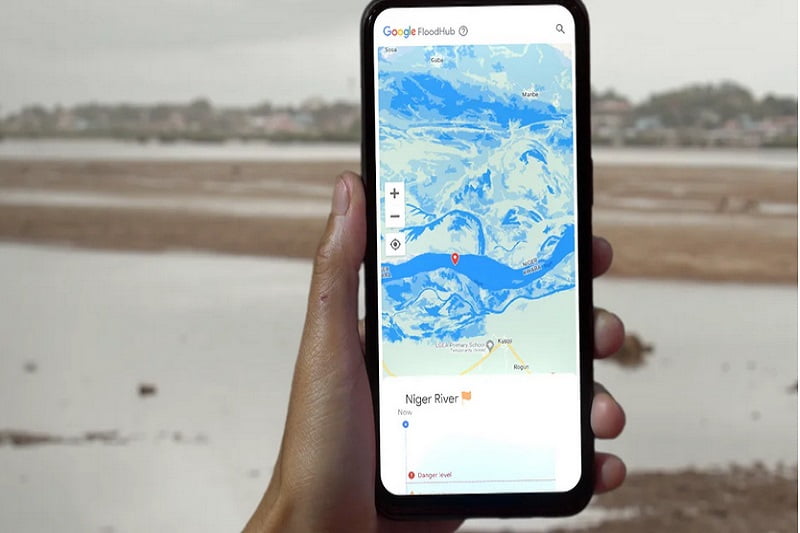
Google FloodHub AI Flood-Forecasting Platform Expands to 80 Countries
In today’s world, artificial intelligence (AI) continues to revolutionize various aspects of our lives. From streamlining business operations to aiding in creative endeavors, AI has proven its versatility. However, one of the most remarkable applications of AI lies in its ability to mitigate the risks associated with natural disasters. Google, a pioneering tech giant, has harnessed the power of AI to develop an advanced flood-forecasting platform known as Google FloodHub. This groundbreaking technology leverages AI algorithms to track and predict floods, enabling people worldwide to stay informed and make timely decisions to protect themselves and their communities.
Contents
- 1 The expansion of FloodHub to 80 countries
- 2 Flood forecasting with an extended lead time
- 3 Empowering millions with crucial flood information
- 4 Google’s plans to integrate flood forecasting alerts in Search and Maps
- 5 Enhancing disaster resilience through AI technology
- 6 The significance of accurate flood predictions
- 7 How FloodHub works: A glimpse into the AI algorithms
- 8 The inclusion of high-risk regions in the expansion
- 9 Collaborative efforts in advancing flood forecasting
- 10 The future of AI in disaster management
The expansion of FloodHub to 80 countries
Last November, Google introduced FloodHub, an AI-enabled flood-forecasting platform, to 20 countries across the globe. This platform harnesses Google’s advanced AI flood-tracking technology to gather data and present flood predictions on an interactive world map. Excitingly, FloodHub has recently expanded its coverage to 80 countries, incorporating an additional 60 countries from Africa, the Asia-Pacific region, Europe, and South and Central America. Among the newly included regions are areas with the highest percentages of people exposed to flood risks, such as the Netherlands, Vietnam, Myanmar, Laos, and Cambodia.
Flood forecasting with an extended lead time
An important upgrade in Google FloodHub’s capabilities is its ability to provide flood forecasting up to seven days in advance. This significant increase from the previous 48-hour lead time enhances preparedness and enables individuals and communities to take proactive measures in the face of impending floods. By leveraging AI algorithms and analyzing historical and real-time data, FloodHub offers more accurate and reliable flood predictions, ensuring that people have ample time to evacuate or implement necessary protective measures.
Empowering millions with crucial flood information
With its expanded reach, Google FloodHub aims to provide flood forecasting to approximately 460 million people worldwide. This accessibility to crucial information empowers individuals and communities to make informed decisions during times of potential disaster. By leveraging the power of AI, FloodHub democratizes access to critical flood-related data, ensuring that vulnerable populations are not left uninformed or ill-prepared.

Google’s plans to integrate flood forecasting alerts in Search and Maps
Looking towards the future, Google has ambitious plans to expand flood forecasting alerts directly into its Search and Maps platforms. This integration will allow users to receive real-time flood updates and vital information tailored to their specific locations. By leveraging the widespread use of Google’s search engine and mapping services, this initiative will ensure that users can access critical flood-related information effortlessly, further enhancing public safety and disaster resilience.
Enhancing disaster resilience through AI technology
The application of AI flood-forecasting technology holds tremendous potential in enhancing disaster resilience. By providing accurate and timely flood predictions, individuals, emergency response teams, and policymakers can better allocate resources, plan evacuation strategies, and develop effective mitigation measures. FloodHub’s expansion signifies a significant step forward in harnessing AI for the greater good, as it enables more people worldwide to have access to invaluable flood-related insights.
The significance of accurate flood predictions
Accurate flood predictions are crucial for effective disaster management. With AI algorithms analyzing a vast array of data sources, including historical patterns, weather forecasts, and satellite imagery, Google FloodHub generates highly precise flood forecasts. These forecasts not only minimize the risks associated with flooding but also reduce the response time required for emergency measures. By improving the accuracy of flood predictions, FloodHub significantly contributes to saving lives and mitigating the devastating impact of floods.
How FloodHub works: A glimpse into the AI algorithms
Behind FloodHub’s cutting-edge flood-tracking technology lies a sophisticated AI system that combines machine learning, data analytics, and predictive modeling. The platform collects data from various sources, including river gauges, weather stations, and satellite imagery, and feeds it into AI algorithms. These algorithms analyze the data, identify patterns, and create models that can forecast flood events. This intricate process allows FloodHub to provide accurate and reliable flood predictions, helping individuals and communities make informed decisions.
The inclusion of high-risk regions in the expansion
Google’s decision to include high-risk regions in FloodHub’s expansion demonstrates its commitment to protecting vulnerable populations. By incorporating countries such as the Netherlands, Vietnam, Myanmar, Laos, and Cambodia, where flood risks are prevalent, FloodHub aims to empower these communities with advanced flood-forecasting capabilities. This inclusive approach ensures that those who are most susceptible to the dangers of flooding have access to the tools necessary for early warning and effective disaster preparedness.
Collaborative efforts in advancing flood forecasting
The development and expansion of FloodHub are the results of collaborative efforts among various stakeholders, including scientific institutions, NGOs, and local communities. This multi-sectoral approach fosters the exchange of knowledge, expertise, and resources, ultimately driving the advancement of flood forecasting technology. By working together, these stakeholders contribute to building more resilient societies that are better equipped to mitigate the impact of natural disasters.
The future of AI in disaster management
As technology continues to evolve, the role of AI in disaster management is poised to grow even further. AI-enabled platforms like Google FloodHub demonstrate the immense potential of AI in providing real-time, accurate, and accessible information during critical times. By leveraging the power of AI algorithms and big data analytics, we can develop comprehensive disaster management systems that empower individuals, strengthen community resilience, and save lives. As we embrace the possibilities of AI, we move closer to a future where the devastating effects of natural disasters can be minimized through timely and informed decision-making.
In conclusion, Google’s AI flood-forecasting platform, Google FloodHub , represents a significant step forward in leveraging technology for the greater good. By expanding its coverage to 80 countries and extending flood forecasting lead time, FloodHub empowers millions of people worldwide with crucial information to prepare for and respond to flood events. Google’s commitment to integrating flood forecasting alerts into Search and Maps further enhances the accessibility and usability of this technology. As AI continues to advance, the potential for AI-driven solutions in disaster management grows, promising a future where communities can effectively mitigate the dangers of natural disasters and protect lives and livelihoods.



